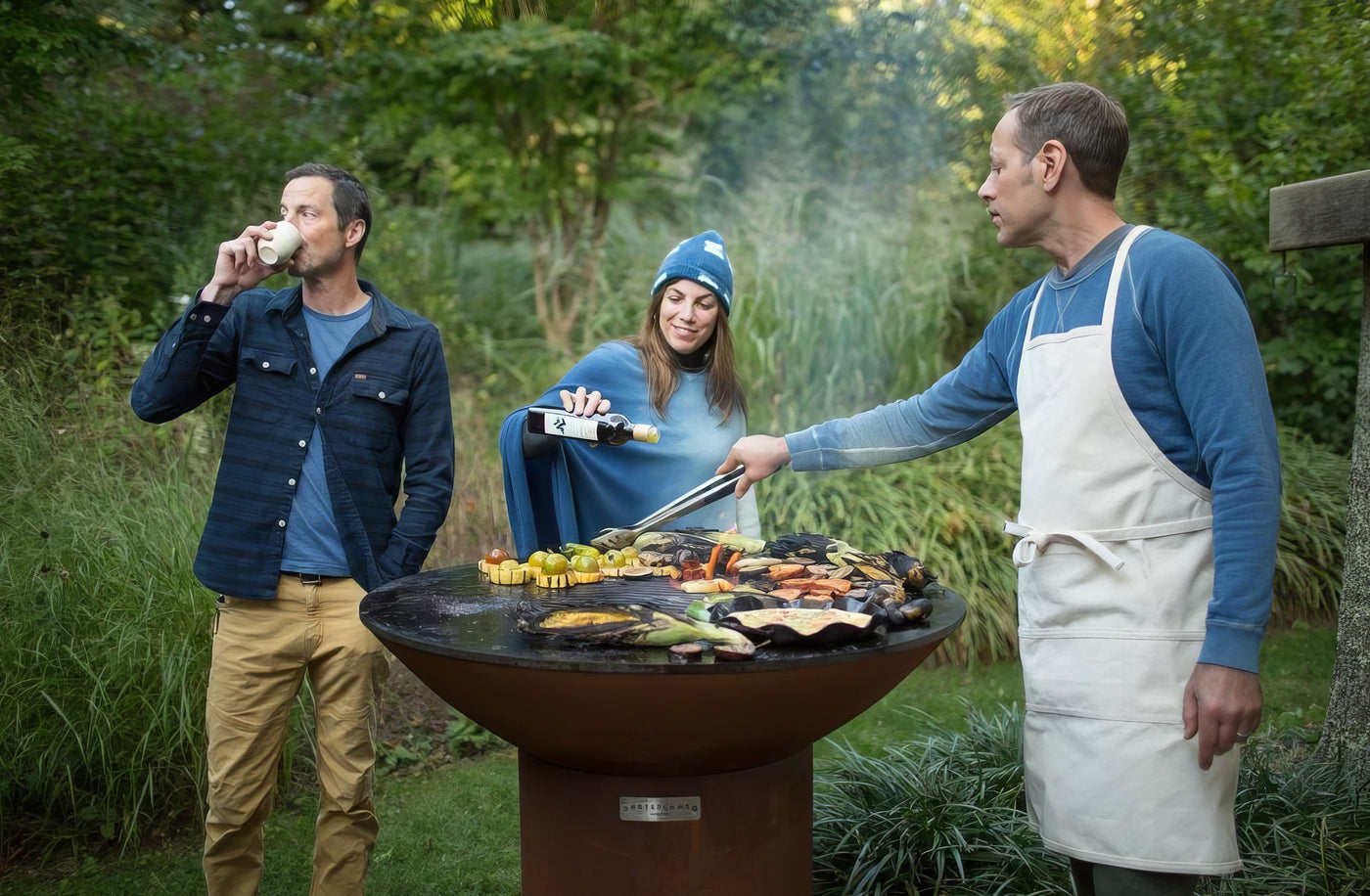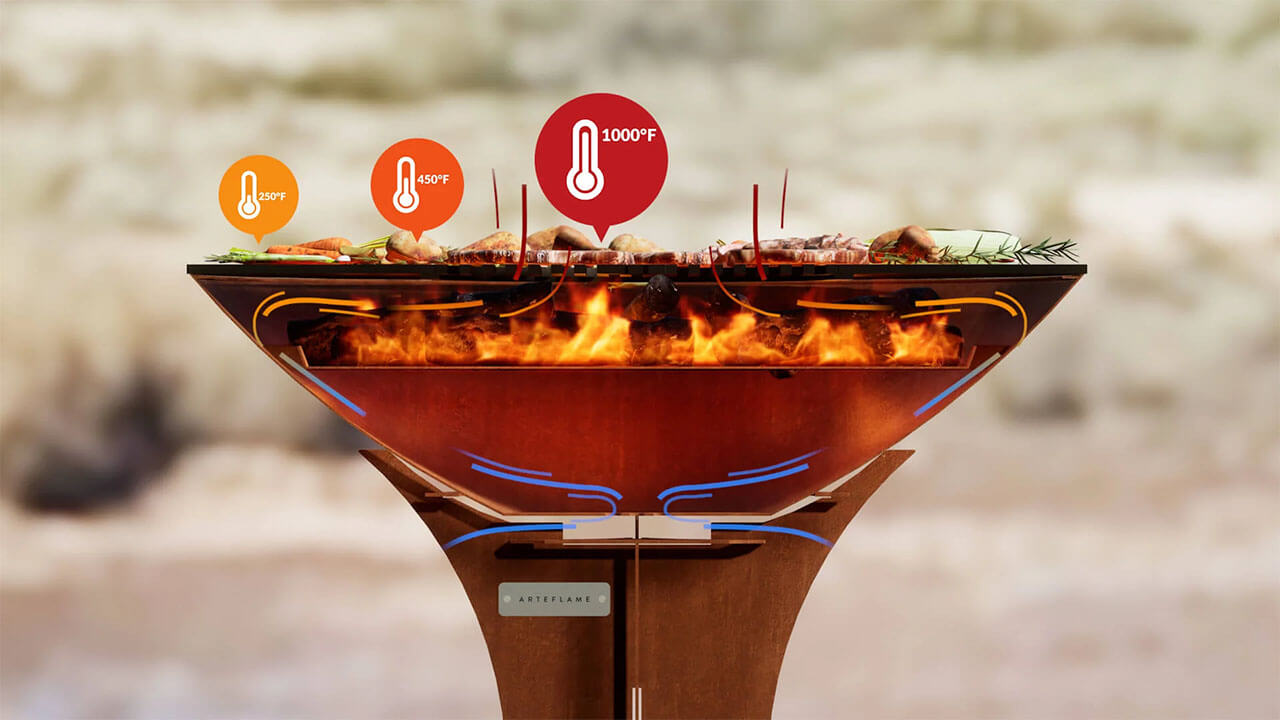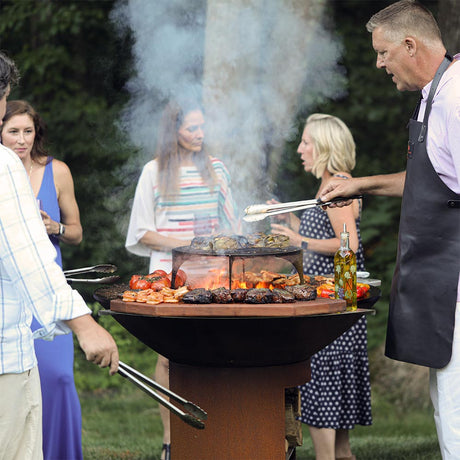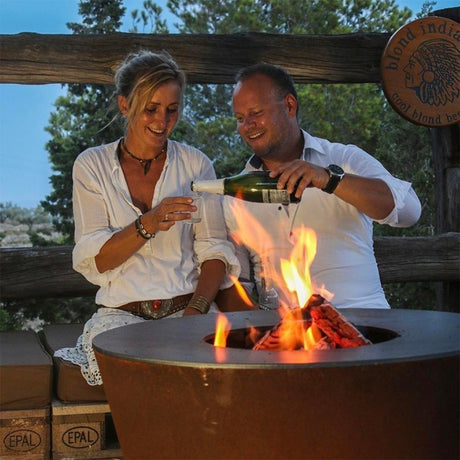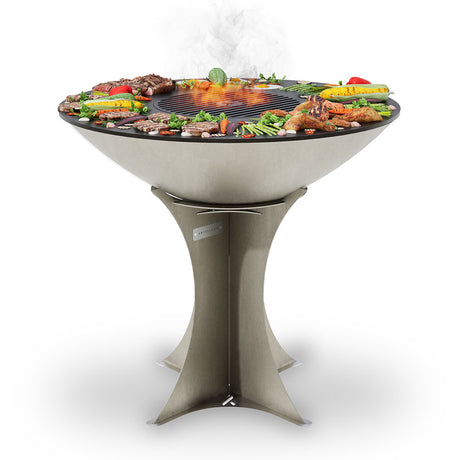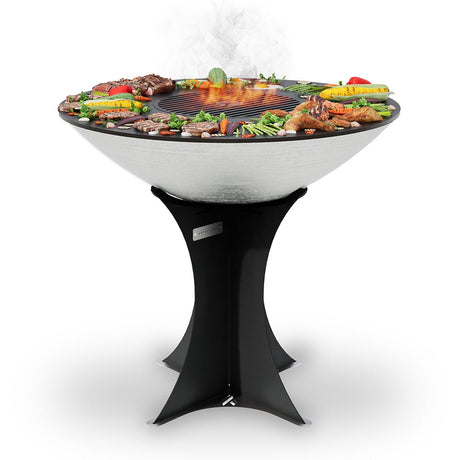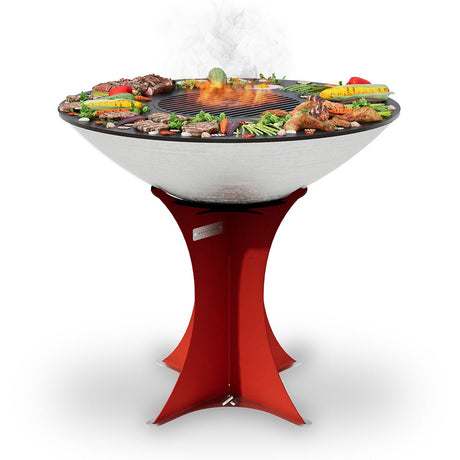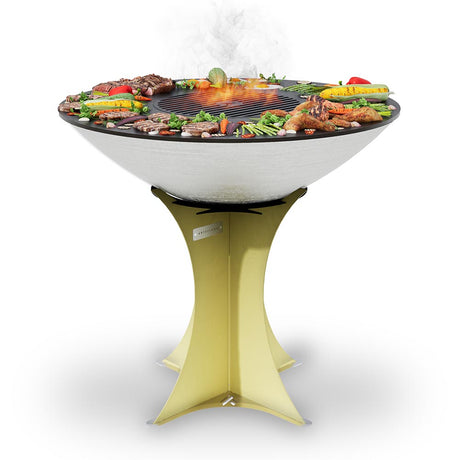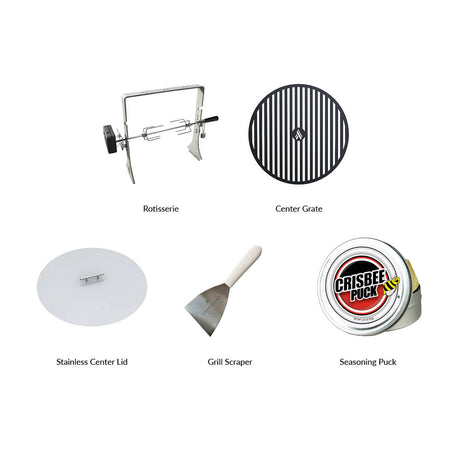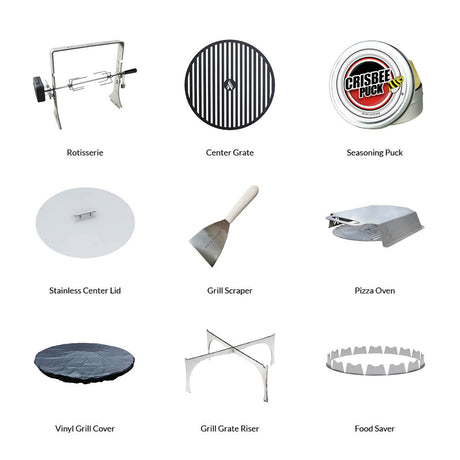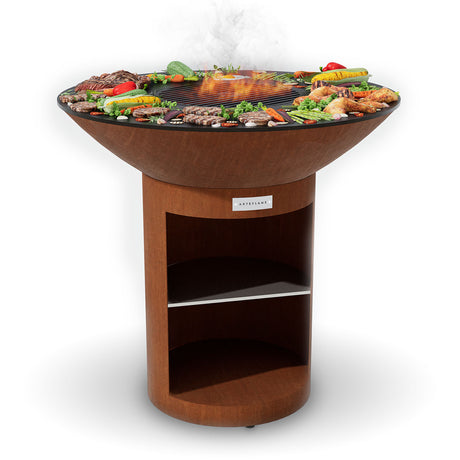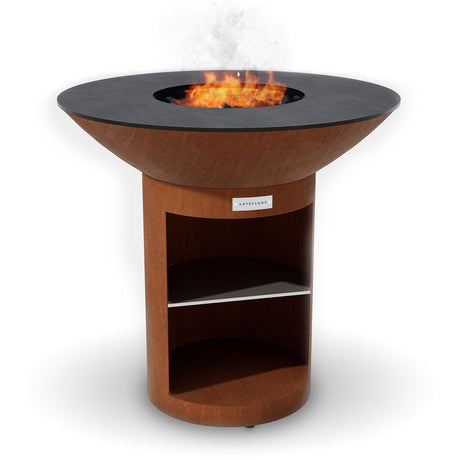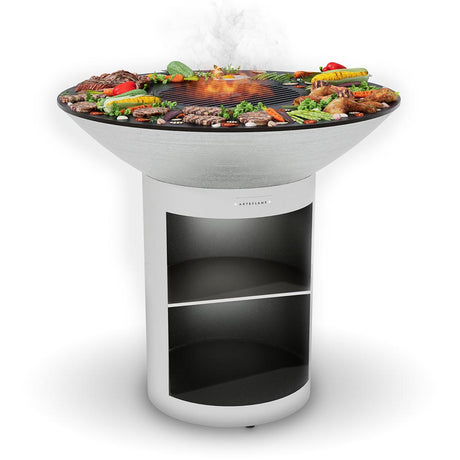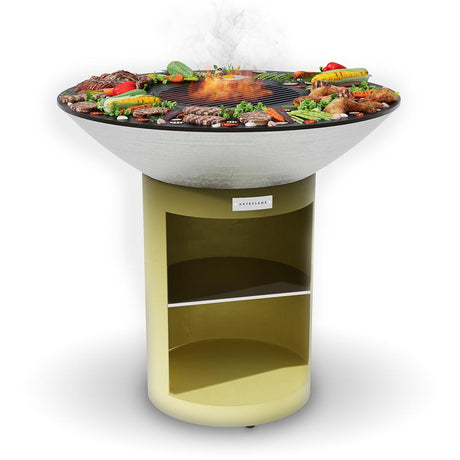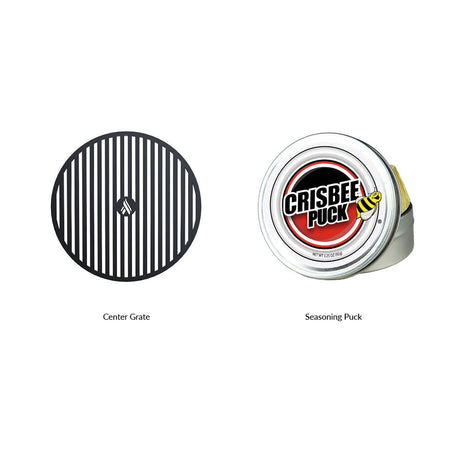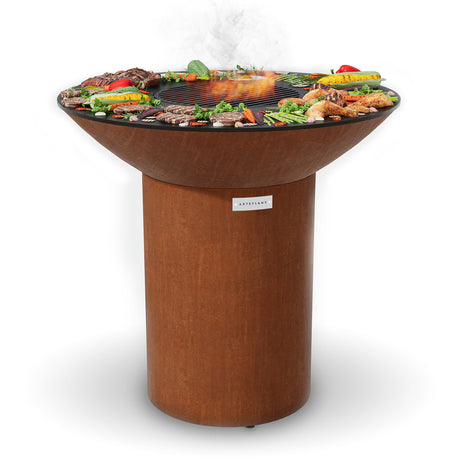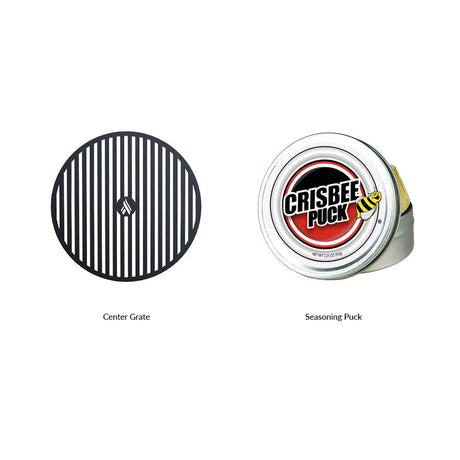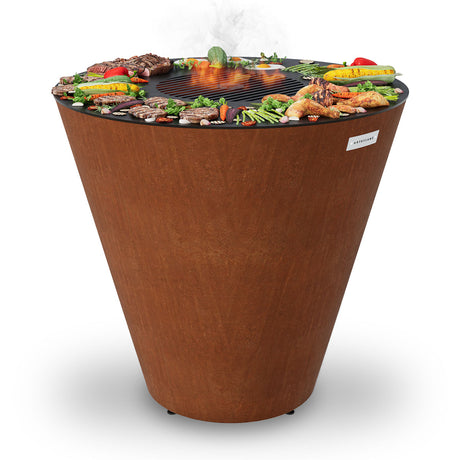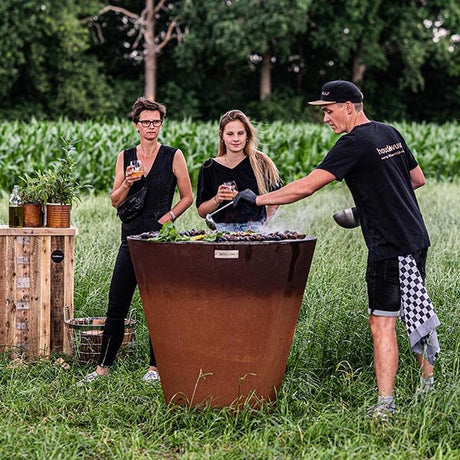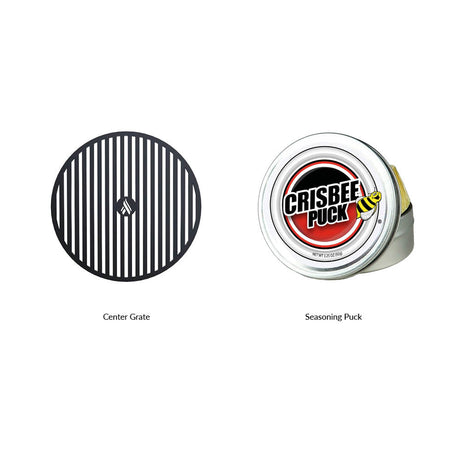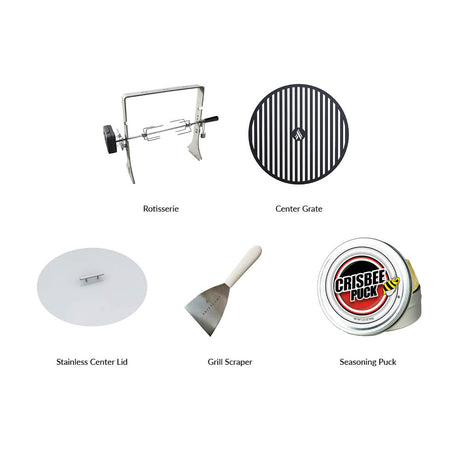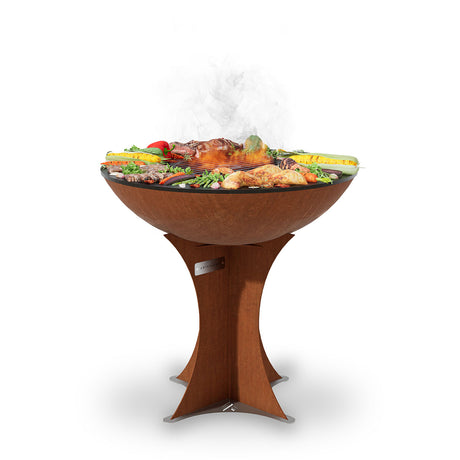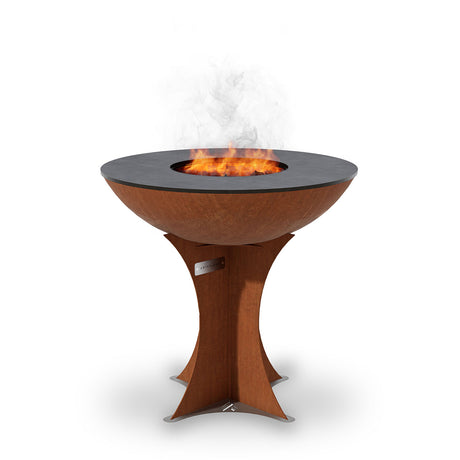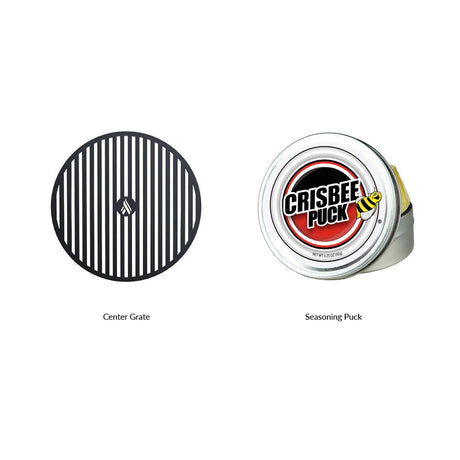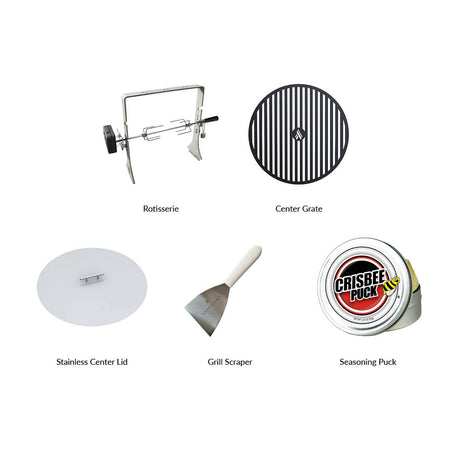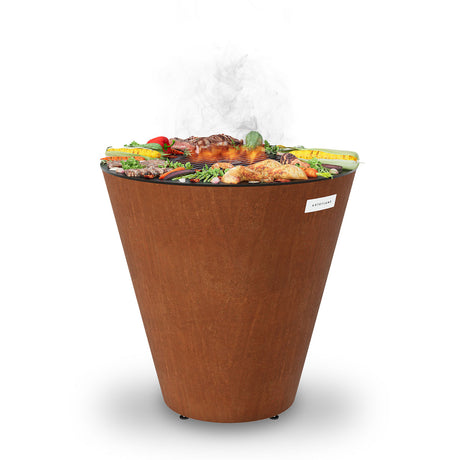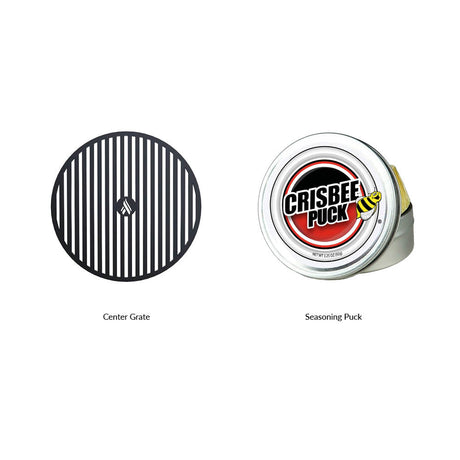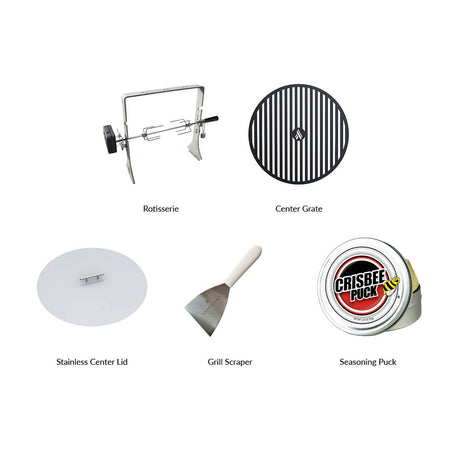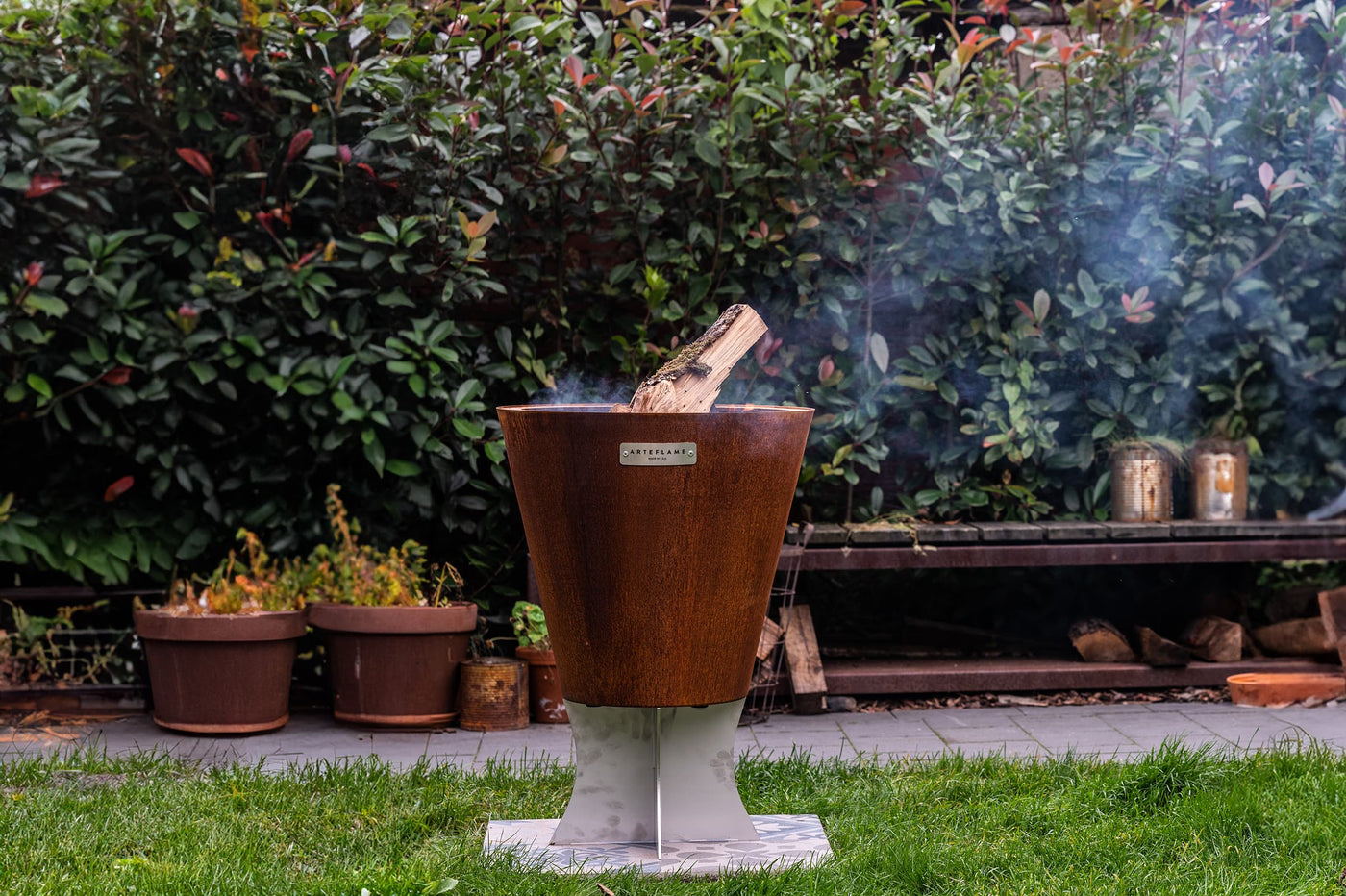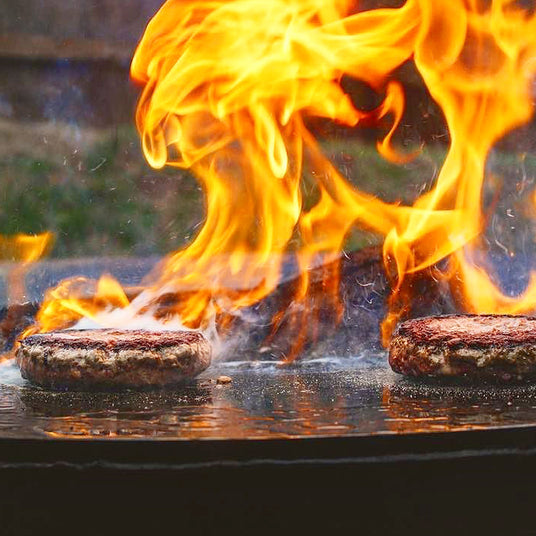
KTÓRY JEST NAJLEPSZY?
When it comes to selecting a grill, the first decision you'll need to make is whether to go a wood/charcoal grill or a gas grill. This choice is crucial as it will shape your entire grilling experience. To assist you in making an informed, let's dive into a comprehensive breakdown of the advantages and disadvantages of wood and gas grills. By understanding the benefits offered by each, you will be able to determine which one best suits your and preferences.
Wood grills elevate grilling to a whole new level by adding the most exceptional and tantalizing flavors. The use of wood or charcoal as fuel enhances the taste and aroma of your grilled food, taking it to a gourmet level. The smoky flavor imparted by wood grills is unmatched, giving your dishes a unique and memorable character. Additionally, wood grills offer greater control over the temperature, allowing you to achieve the perfect level of heat for different types of ingredients. This precision ensures that your food is cooked to perfection, guaranteeing an exquisite dining experience.
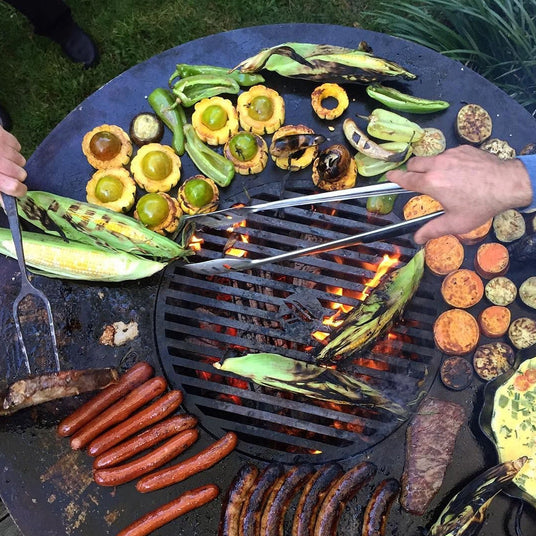
convenience and ease of use
On the other hand, gas grills provide convenience and ease of use. These grills come with adjustable burners that enable temperature control with a simple turn of a knob. Unlike wood grills, there's no need to wait for charcoal to ignite and reach the desired temperature. With a gas grill, you can start cooking immediately. Additionally, gas grills are easier to clean but do require much more maintenance compared to their wood counterparts. Arteflame grills use no valves, switches or gimmicks of any kind that can break.
To summarize, wood grills excel in the realm of flavor, infusing your food with an unrivaled smoky taste that delights the palate. The use of wood or charcoal provides much higher temperatures, ensuring perfect cooking results. On the other hand, gas grills offer convenience.
Armed with a thorough understanding of the benefits associated with both wood and gas grills, you're now equipped to make an informed decision. Consider your personal preferences, cooking style, and the overall grilling experience you desire. Ultimately, the choice between wood/charcoal and gas grills will depend on your specific needs and desires.

SMAK GAZU A SMAK OGNIA DREWNA
Czy jesteś zmęczony kompromisem w kwestii smaku grillowanego jedzenia? Nie szukaj dalej! Rozwiązaniem Twojego problemu jest wybór grilla opalanego drewnem. Czas przenieść swoje doświadczenie grillowania na wyższy poziom i rozkoszować się wykwintnym smakiem, który może zapewnić tylko grill opalany drewnem.
Bądźmy szczerzy, głównym powodem, dla którego ludzie wolą grillowanie od innych metod gotowania, jest niezrównany smak, jaki nadaje ono jedzeniu. A jeśli chodzi o smak, grillowanie na drewnie jest w swojej własnej lidze. Niepowtarzalnego smaku, jaki grill opalany drewnem dodaje jedzeniu, po prostu nie da się odtworzyć nigdzie indziej.
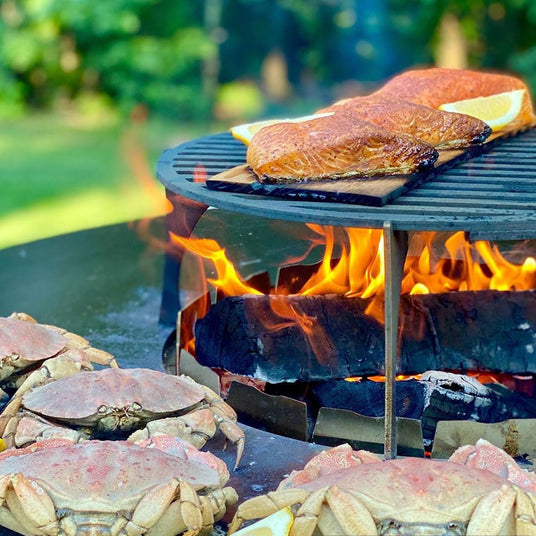
taste of wood-fired grilled food
But why is the taste of wood-fired grilled food so exceptional? There are two key elements at play here: searing and smoke flavor. Searing locks in the juices and creates a mouthwatering caramelized crust on your food, enhancing its flavor and texture. And let's not forget about the unmistakable aroma of smoke that infuses your food, giving it that irresistible smoky flavor that you crave.
Now, let's talk about gas grills for a moment. It's important to note that the gas used in your grill is the same gas that powers city buses. Just think about it. Grilling on gas means your food is being exposed to the same fumes as a city bus exhaust! Do you really want that unpleasant smell lingering on your food? We're guessing not.
So, if you're serious about taking your grilling game to the next level and indulging in the lovely taste of wood-fired grilled food, it's time to make the switch. Say goodbye to compromise and hello to flavor perfection. Get yourself a wood-fired grill today and ignite a world of culinary possibilities. Your taste buds will thank you!
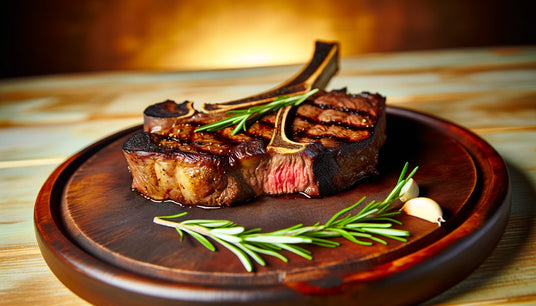
WHY IS A GREAT SEAR IMPORTANT?
When proteins and carbohydrates (sugars) are heated together, the Maillard reaction occurs, which is essential for developing rich and complex flavors in food.
Steakhouses sear over wood at 1,000°F to properly sear the food and enhance its flavor. Arteflame Grills excel at reaching these high temperatures and are perfect for achieving that coveted sear. The intense heat generated by wood or charcoal creates a beautifully caramelized crust on the food, resulting in a more enjoyable dining experience.
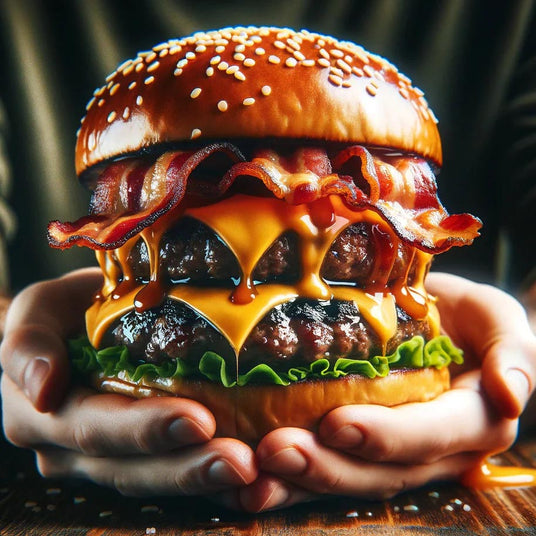
gas grills heat food indirectly
Gas grills heat food indirectly and are not well-suited for proper searing as they typically don't reach the high temperatures required. Although some high-end gas grills have sear burners, they are often small and limited in their capacity.
For those looking to truly indulge in the taste of barbecued food, charcoal and wood grills are the superior choice. The combination of their intense heat and the Maillard reaction guarantees a more flavorful and satisfying meal. So, if taste is your priority, opting for a charcoal or wood-fired grill is the way to go.
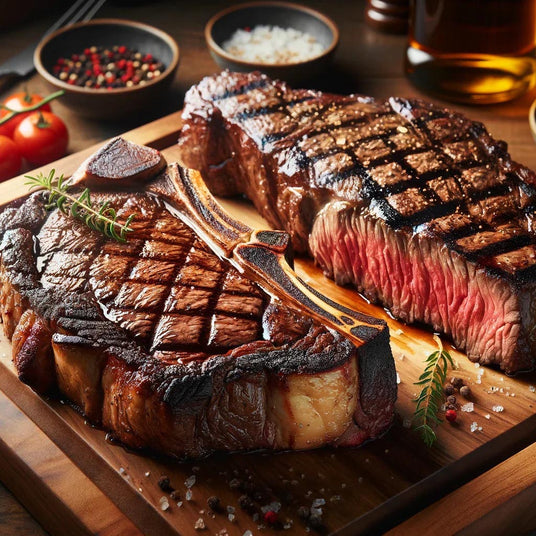
KLUCZ DO WSPANIAŁYCH STEKÓW
Jeśli chodzi o osiągnięcie idealnego przypiekania mięsa, ważne jest zrozumienie ograniczeń większości grilli gazowych. Chociaż te grille z pewnością mogą „zrumienić” powierzchnię jedzenia, często mają trudności z osiągnięciem wysokich temperatur wymaganych do optymalnego przypiekania.
Proces brązowienia, znany jako reakcja Maillarda, zaczyna się w temperaturze około 350°F. Jednak aby uzyskać najlepsze rezultaty, temperatura musi przekroczyć 500°F. Niestety, grillowanie w niższej temperaturze powoduje nadmierne gotowanie wnętrza mięsa, ponieważ proces brązowienia trwa zbyt długo.
To, co odróżnia smażenie od zwykłego brązowienia, to odwodnienie powierzchni i chrupkość, jakie nadaje ono jedzeniu. Tworzy to pożądany kontrast w teksturze między zewnętrzną skórką a delikatnym wnętrzem. Stekownie smażą swoje jedzenie w temperaturze 1000°F; jeśli chcesz jakości stekowni, potrzebujesz temperatur stekowni.

osiągnąć temperaturę ponad 1000°F
Jeśli chodzi o przypiekanie, niezbędny jest grill węglowy lub opalany drewnem. Niewiele grilli osiąga temperaturę powyżej 1000°F, zapewniając intensywne ciepło niezbędne do uzyskania pożądanego przypiekania.
Jeśli szukasz wszechstronnego grilla, który smaży w wysokich temperaturach i zapewnia wygodę i łatwość grilla gazowego, nie szukaj dalej niż Arteflame. Ten innowacyjny grill łączy w sobie najlepsze cechy obu światów, osiągając temperatury smażenia steków przewyższające nawet te tradycyjnych grilli węglowych.
Tak więc, podczas gdy większość grilli gazowych jest w stanie zrumienić jedzenie, osiągnięcie temperatur wymaganych do właściwego przypiekania jest wyzwaniem. Dla tych, którzy szukają najlepszych wrażeń z przypiekania, zalecany jest grill węglowy lub opalany drewnem.
Arteflame XXL 40" Grills
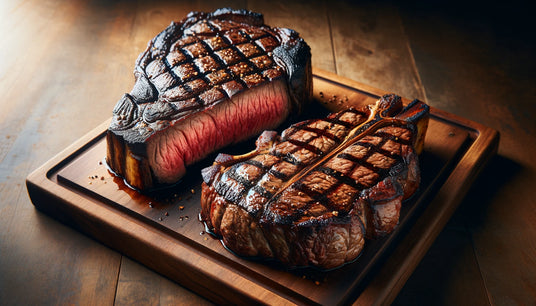
HIGH TEMPERATURE SEARING
FOR STEAKHOUSE QUALITY STEAKS
Steak aficionados, listen up! When it comes to achieving that perfect sear on your favorite cut of meat, the choice of equipment is vital. Steak restaurants rely on gas broilers capable of reaching scorching temperatures of 800°F - 1200°F or, even better, grill over a wood fire at these same temperatures.
To truly replicate the mouthwatering sear commonly found in steakhouses, it is essential to ensure that your gas grill can reach a minimum temperature of 800°F++. However, it's important to note that gas grills meeting these temperature criteria are relatively rare.
In contrast, Arteflame grills are known for their ability to generate intense heat, exceeding 1,000°F. These high temperatures are precisely what you need to create that sought-after edge-to-edge sear on your steak. So, if achieving a seared masterpiece is your goal, an Arteflame grill may be the ideal choice for you.
Remember, when it comes to grilling perfection, don't settle for anything less than the optimal temperature range. Whether you opt for a gas grill that can reach these high temperatures or choose the reliability of an Arteflame, the key is to ensure that your grilling equipment can deliver the intense heat required for a flawlessly seared steak.

SEARING VS BROWNING,
WHAT'S THE DIFFERENCE?
Browning is a culinary technique that holds immense power when used correctly. However, it must be approached with precision and care to ensure the desired results. Striking the perfect balance between achieving a beautifully browned exterior while avoiding overcooking requires a deep understanding of the culinary arts.
When it comes to browning meats, the Arteflame reigns supreme. Its ability to generate intense heat allows for the quick searing of the surface, creating a delectable crust. This method is particularly suitable for tender cuts such as steaks and chops, as it guarantees a perfect balance of browning and maintaining the desired temperature within, resulting in a succulent, mouthwatering dish.
Conversely, when dealing with tougher cuts like brisket, the reverse searing method proves to be invaluable. This technique involves a more cautious approach, employing low heat to gently raise the internal temperature of the meat before subjecting it to a fierce sear over high heat. With patience and precision, the reverse searing method ensures that every inch of the meat is infused with rich flavors, delivering a tender and succulent end result.
Mastering the art of browning is an endeavor that calls upon experience, expertise, and a keen understanding of the ingredients at hand. It is through this careful mastery that the true potential of flavors can be unlocked, elevating the dining experience to new heights. The controlled application of heat and the transformative effects it has on food are the fundamental pillars upon which the art of browning is built.
In conclusion, browning is an essential flavoring technique that demands skill and finesse. Whether it be the use of a charcoal grill to impart a tantalizing sear on steaks and chops, or the reverse searing method to transform tougher cuts into tender delicacies, the art of browning is an invaluable tool for any culinary enthusiast. Through practice and experience, one can unlock the potential of browning, unraveling a symphony of flavors and elevating any dish to a realm of unparalleled gustatory pleasure.
ARTEFLAME XL 30" GRILLS

SPRÓBUJ ODWRÓCONEGO OBRZEŻENIA
IDEALNY STEK
Metoda odwrotnego przypiekania od dawna jest uznawana za niezawodną technikę uzyskiwania wyśmienitych, soczystych steków z nieskazitelnym przypiekaniem. To podejście zapewnia idealne przypiekanie zewnętrznej części z idealnie ugotowanym wnętrzem.
Aby rozpocząć podróż odwrotnego przypiekania, kluczowe jest zrozumienie podstawowych kroków tego procesu. Głównym celem jest uzyskanie idealnego przypiekania w temperaturze ponad 1000°F, jak w steakhousie. Po uzyskaniu idealnego przypiekania przenieś stek na płaską płytę grzewczą, aby jeszcze bardziej podnieść jego wewnętrzną temperaturę do pożądanego poziomu, mając świadomość, że będzie on nadal się podnosił podczas odpoczynku. Jako ogólną wskazówkę, jeśli celem jest uzyskanie steka średnio wysmażonego w temperaturze 135°F, zdejmij stek z grilla w temperaturze 120°F.
Metoda odwrotnego przypiekania wydobywa to, co najlepsze w stekach. Ignorując konwencjonalną mądrość, można uzyskać stek, który jest jednocześnie delikatny, soczysty i perfekcyjnie przypiekany.

NAJPIERW Sous-Vide,
GRILL DRUGI
Aby uzyskać optymalną kruchość i idealną temperaturę wewnętrzną steków, wiele cenionych restauracji serwujących steki wykorzystuje technikę gotowania zwaną sous-vide. Polega ona na podgrzewaniu steka w próżniowo zamkniętym worku w precyzyjnie kontrolowanej temperaturze przez kilka godzin (4 godziny w temperaturze 131°F). Efekt? Bardziej miękki i delikatny stek, który z pewnością zadowoli nawet najbardziej wymagające podniebienia.
Aby przenieść stek na wyższy poziom i osiągnąć szczyt smaku, rozważ połączenie techniki sous-vide z niepowtarzalną wędzonością grilla węglowego. Ta kombinacja nada Twojemu stekowi kuszącą chrupkość, tworząc harmonijną jedność pysznych tekstur i smaków.
Po procesie sous-vide niezwykle ważne jest dokładne osuszenie steku. Ten krok zapewnia idealne, nieskazitelne przypieczenie. Kluczowym elementem w osiągnięciu pożądanego przypieczenia jest brak wilgoci na powierzchni steku. Wilgoć hamuje proces przypiekania, utrudniając powstanie pożądanej karmelizowanej skórki.
Aby uzyskać idealne przypieczenie, zaleca się użycie ustawienia grilla o wysokiej temperaturze, najlepiej osiągającej temperaturę 800°F lub wyższą. Ta wysoka temperatura jest kluczowa dla uzyskania rozkosznie zwęglonej zewnętrznej części przy jednoczesnym zachowaniu soczystego, średnio wysmażonego wnętrza. Poddając stek działaniu intensywnego ciepła przez krótki czas z obu stron, zapewniasz nieskazitelne przypieczenie, które podniesie poziom Twojego steka.
Połączenie sous-vide zmiękczania i pieczenia grill zapewnia niezrównane wrażenia ze steka. Pamiętaj, aby dokładnie usunąć wilgoć z powierzchni steka, aby zagwarantować nieskazitelne przypieczenie. Tylko wtedy odblokujesz pełny potencjał swojego steka.
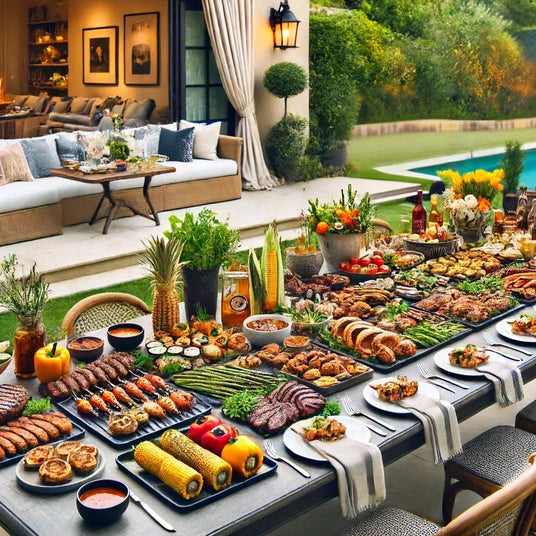
SMOKE FLAVOR AS SEASONING
Smoke adds a distinct flavor to food that can't be replicated. Porous foods, like bread, quickly absorb smoky flavors, and experimenting with different wood types that produce varied smoke flavor profiles is a charcoal grill advantage. Hickory, for instance, imparts a bold and rich flavor to steaks, while alder is perfect for salmon. Each wood type's unique characteristics, derived from components like lignin, contribute to its distinct smoke profile.
Charcoal is primarily carbon and doesn't produce much smoke by itself. The smoke in a charcoal grill comes from drippings (oils, grease, sauce, proteins) that fall onto the charcoal. These drippings do not give a good smokey flavor. To create specific smoke flavors, wood or wood chunks need to be added to the charcoal. Adding wood or wood chunks to a gas grill is challenging, and even with a "smoke box," the lid often doesn't seal well enough to trap the smoke for long, imparting minimal flavor.
The engineered airflow of the Arteflame accomplishes an almost complete burn but produces enough smoke to flavor your food. For more smoke flavor, add some fresh wood to the fire or simply use the optional grill grate riser to reduce the heat and put your food directly into the smoke stream for just the perfect amount of flavor.
